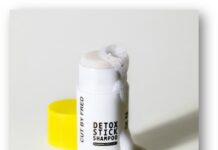Amcor, a global leader in developing and producing responsible packaging solutions, developed a polypropylene (PP) closure for household products that combines a distinctive shape with a lightweighted design to enable brands to maximize visual appeal while helping them meet their sustainability commitments.
Amcor says the new hector child resistant closure (CRC), weighing just 7.25 g, is one of the lightest closures available on the market, offering important material savings and CO2 reductions. Compared to a conventional 14g closure, the Hector offers a 6.75 tons reduction in plastic for a one million pieces order.
The Hector has been assessed using renowned industry recyclability self-assessment tools, which indicate the highest recyclability rating when combined with either an HDPE or PET bottle. In addition, the closure can be manufactured in up to 100% CleanStream Home and Industrial, Amcor’s high-quality post-consumer recycled (PCR) plastic polymer for non-contact-sensitive packaging.
Ideal for bleaches and toilet cleaners, the two-piece Hector closure features a directional nozzle and a dome-shaped overcap, with a curved design that complements the typical curved shapes of many bleach and cleaner bottles. Combined with a larger 38 mm (for HDPE bottles) and 36 mm (for PET bottles) neck, the distinctive look creates greater shelf presence. This is further enhanced by the novel thumb and finger holds, which provide the squeeze-and-turn safety feature of the CRC. The Hector can also be customized and color-matched to individual brand requirements.
For user convenience, the spout allows precise dosing of product, including hard-to-reach areas, with accurate directional control. The tight-fitting overcap provides a secure seal to prevent leakage.
“The Hector is very much a consumer-led design, helping brands to create on-shelf appeal while meeting safety requirements and supporting sustainability goals,” commented Alejandra Beltran, vice president of research and development of Amcor Global Rigid Packaging Solutions. “It perfectly demonstrates how bigger doesn’t have to mean heavier, and can still be aesthetic, functional and more sustainable at the same time.”












